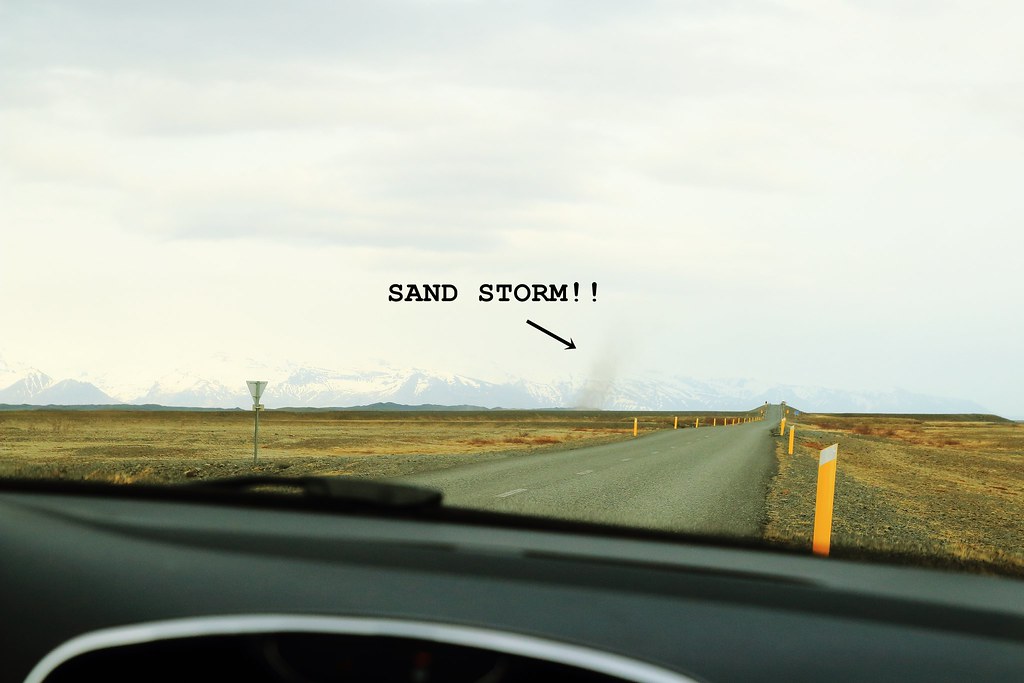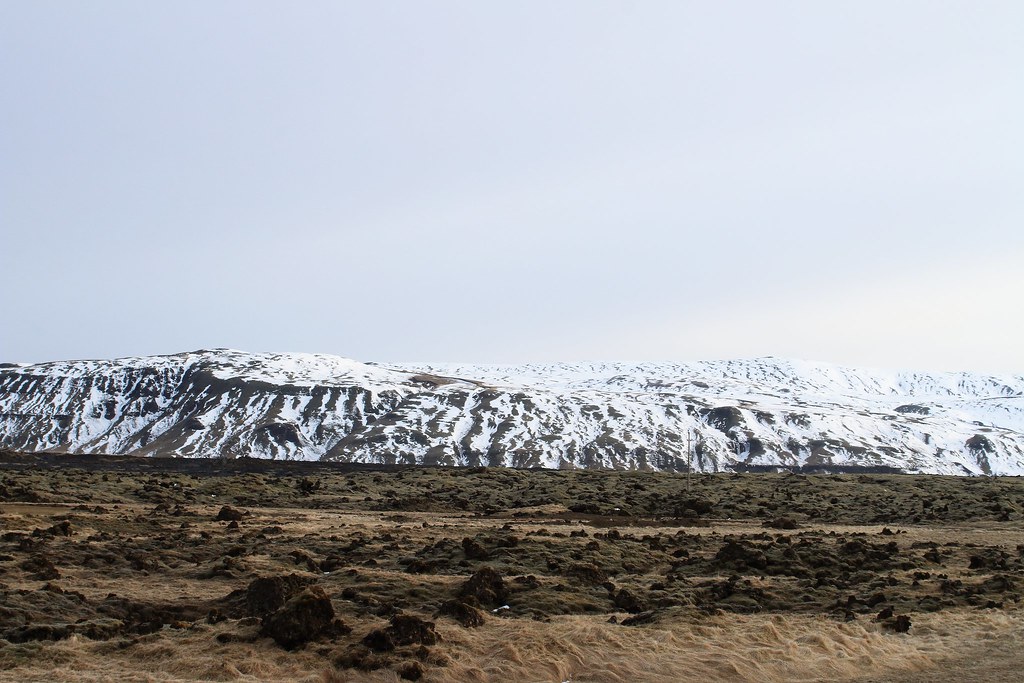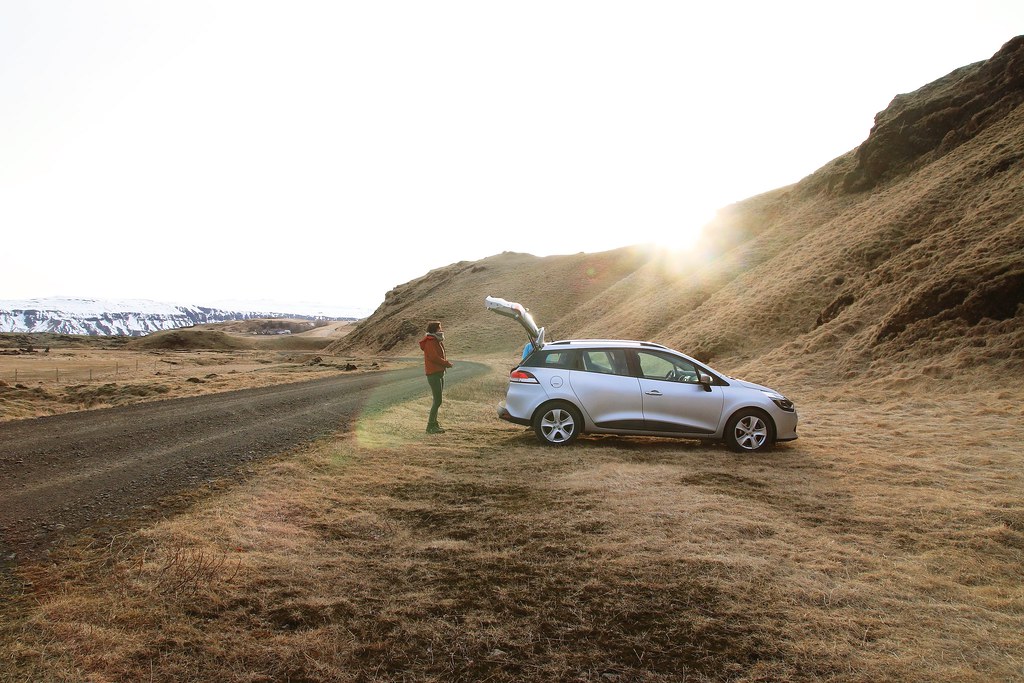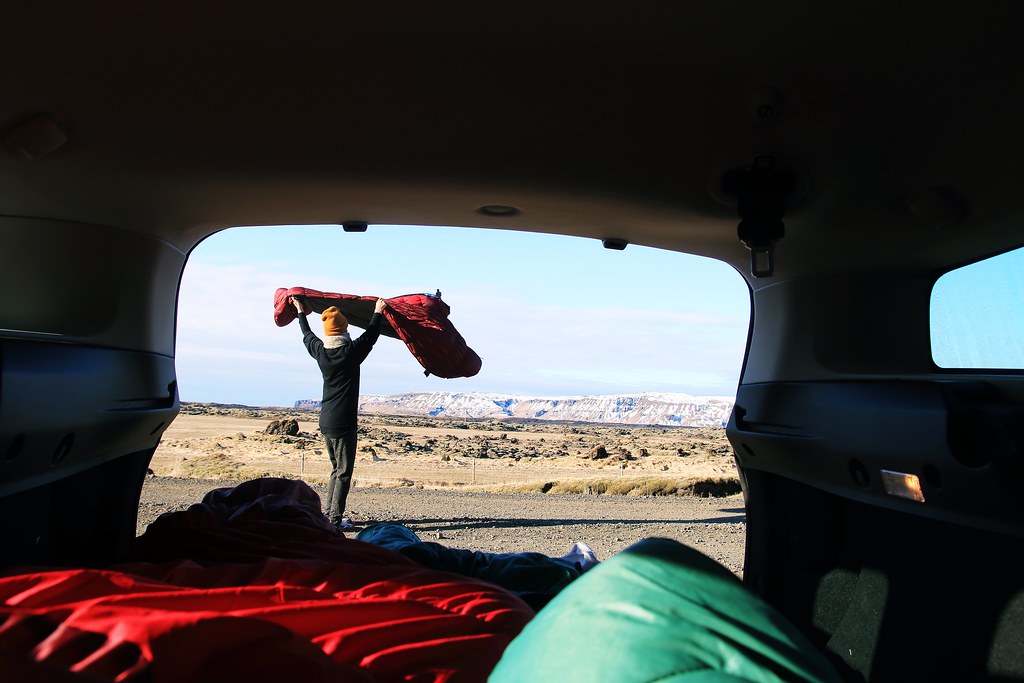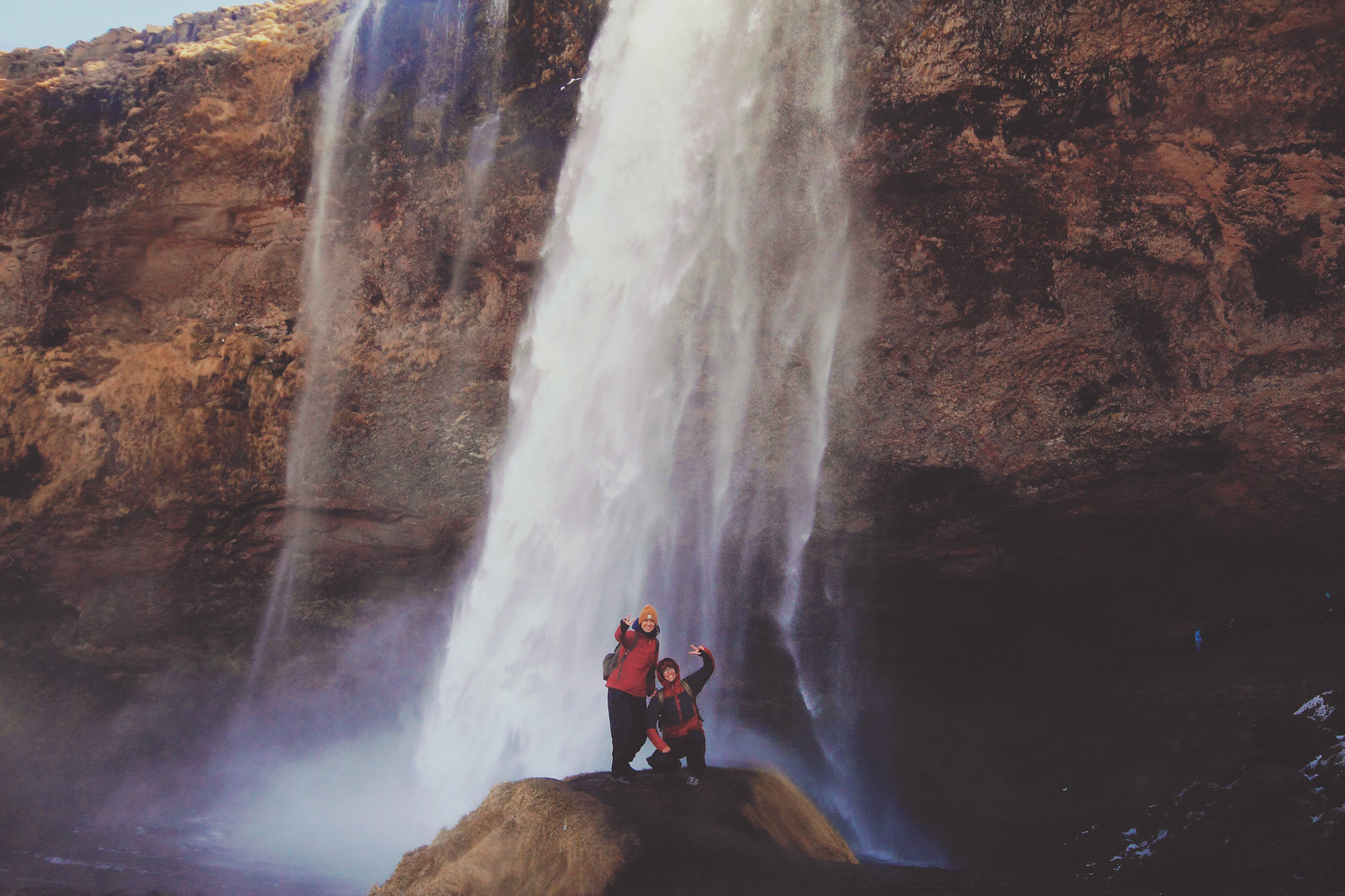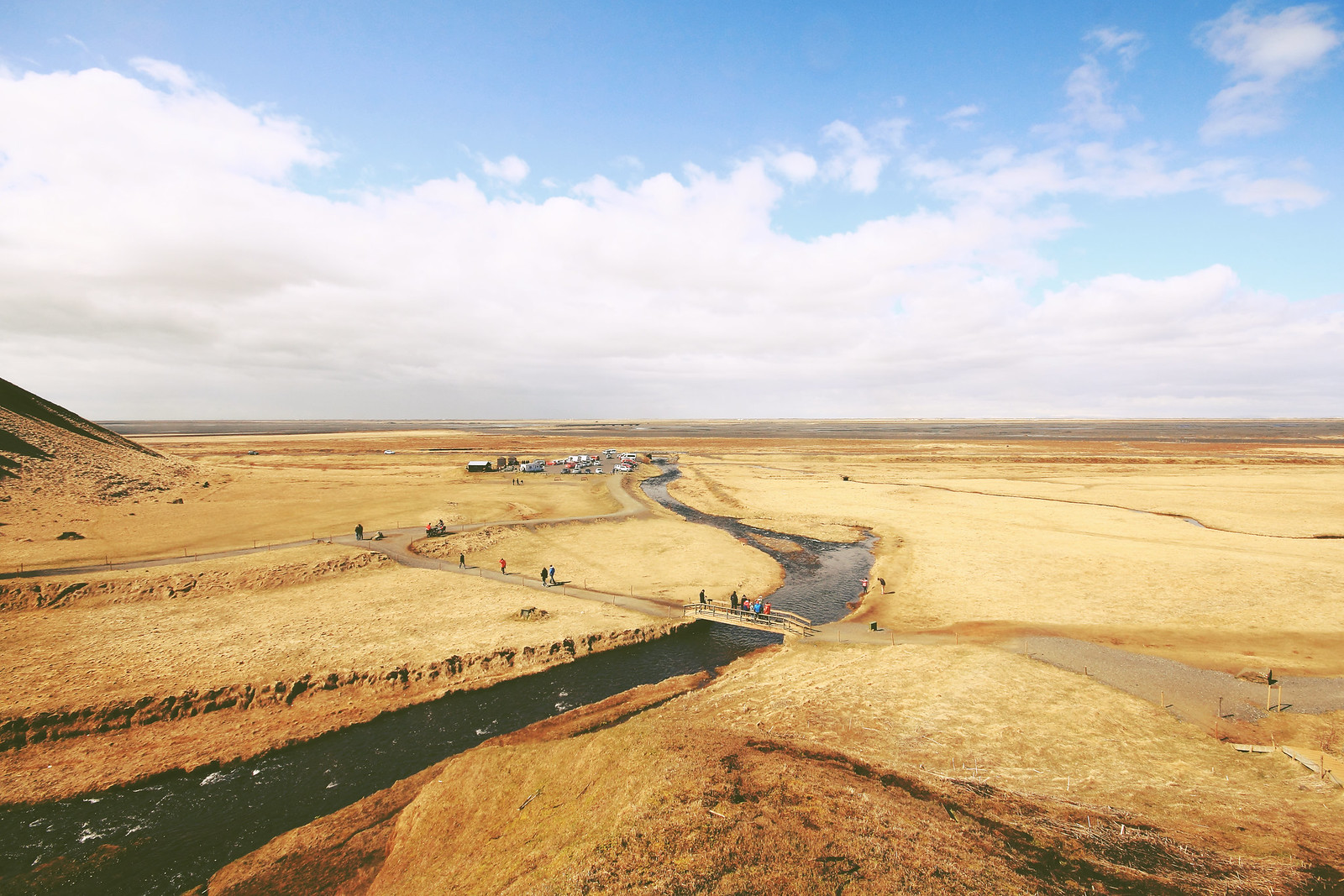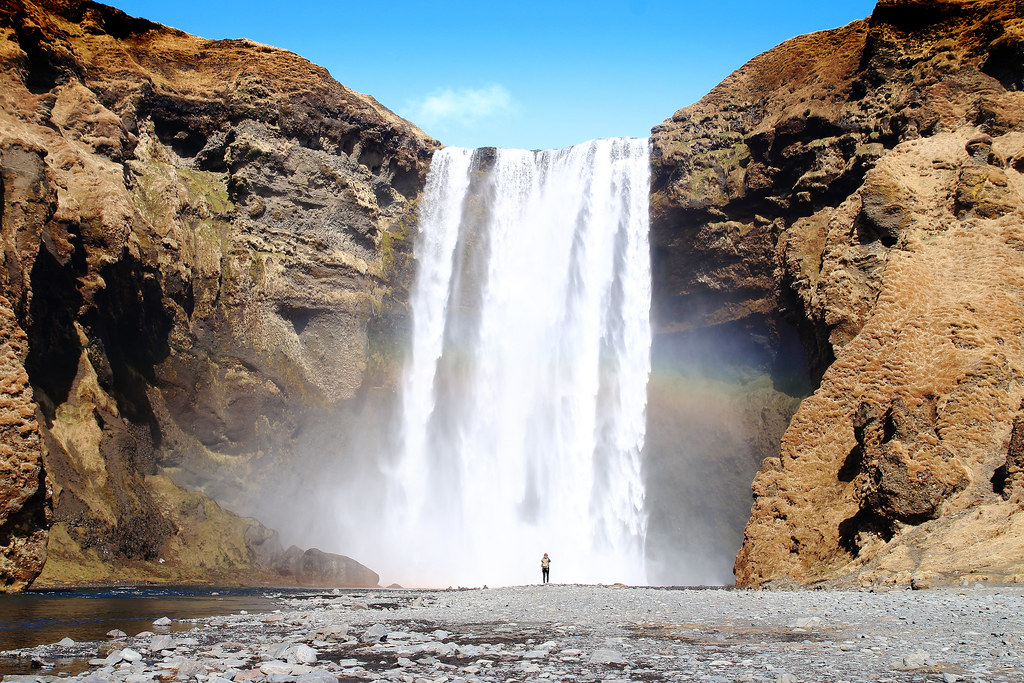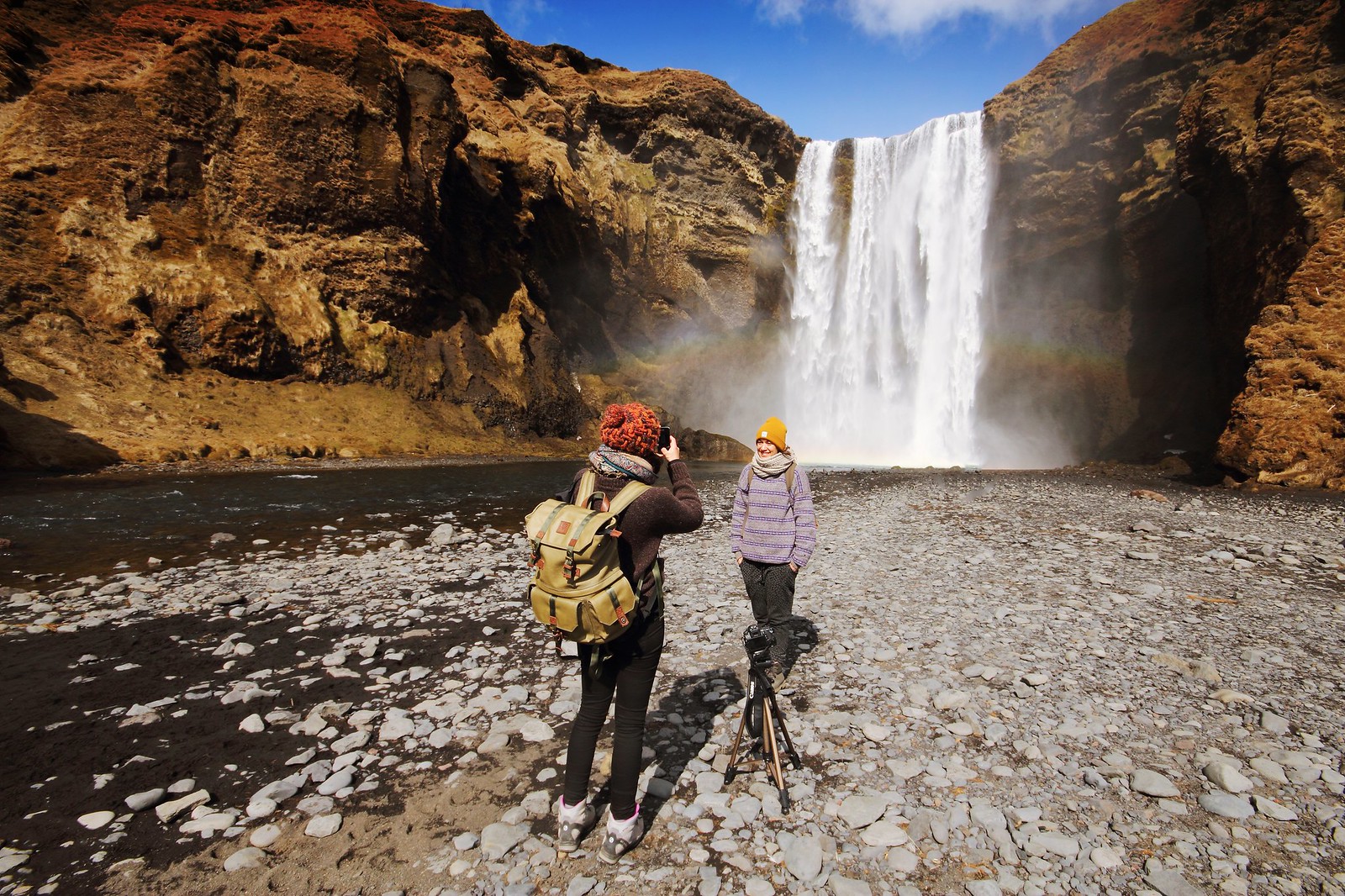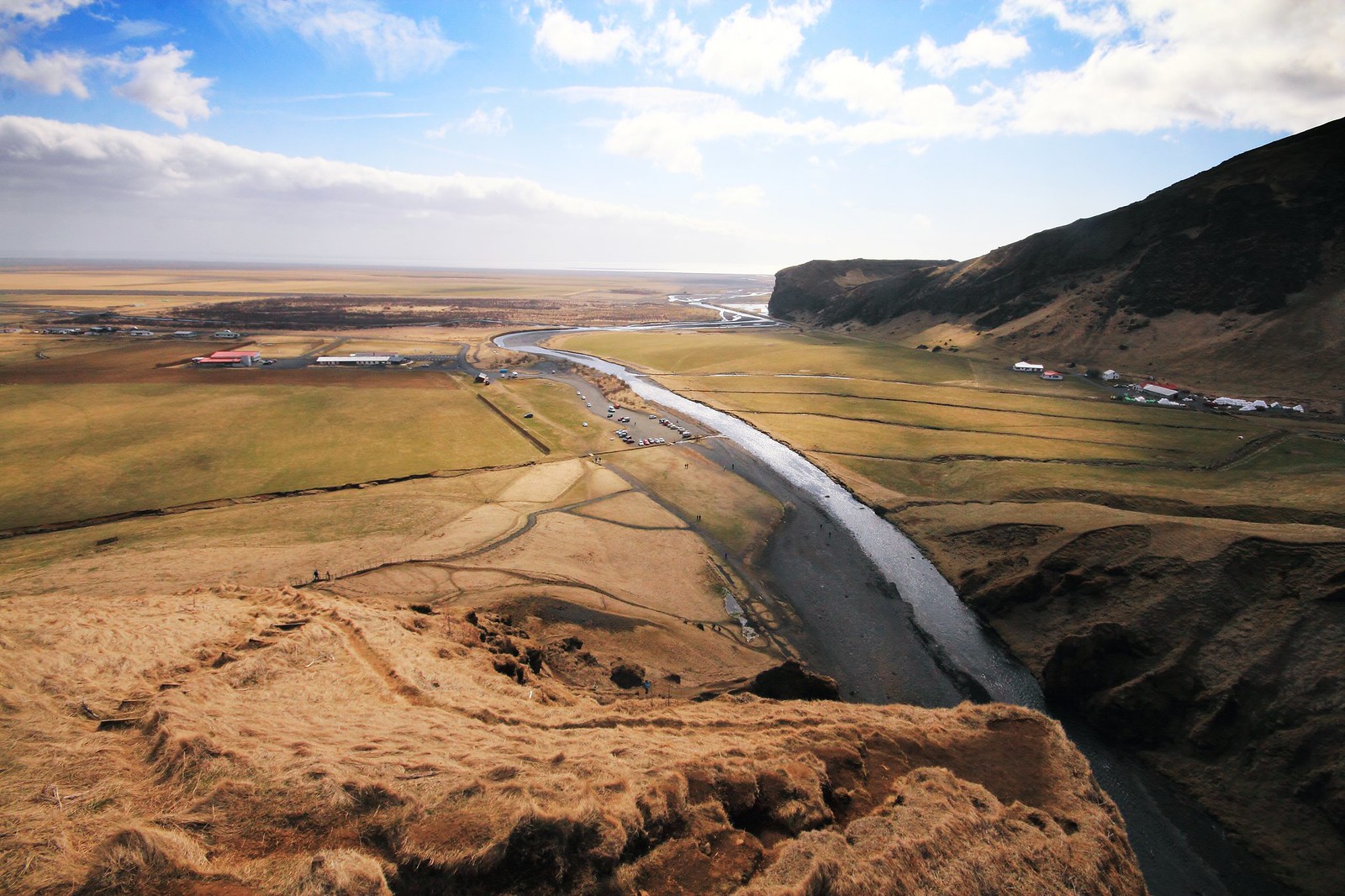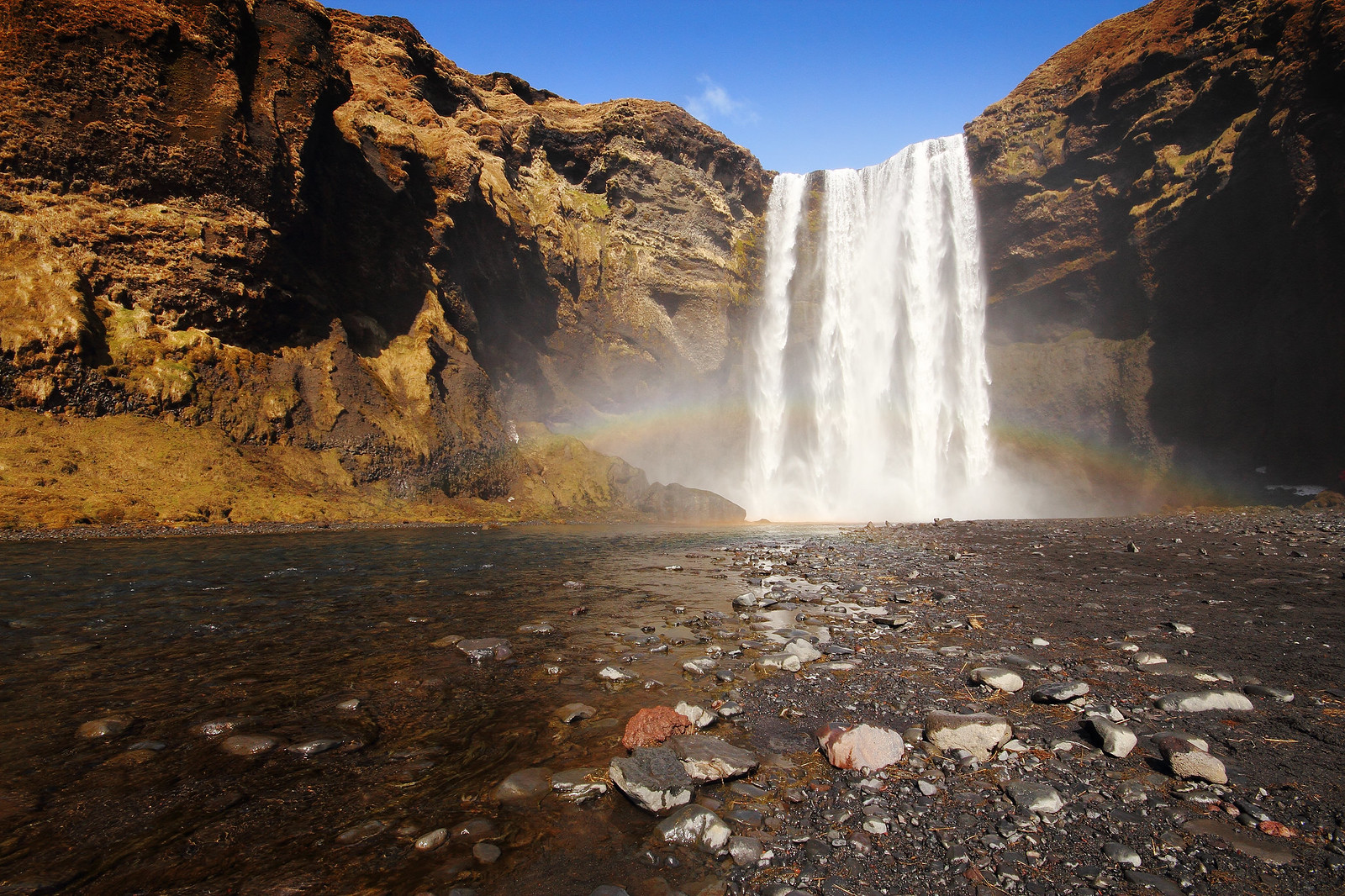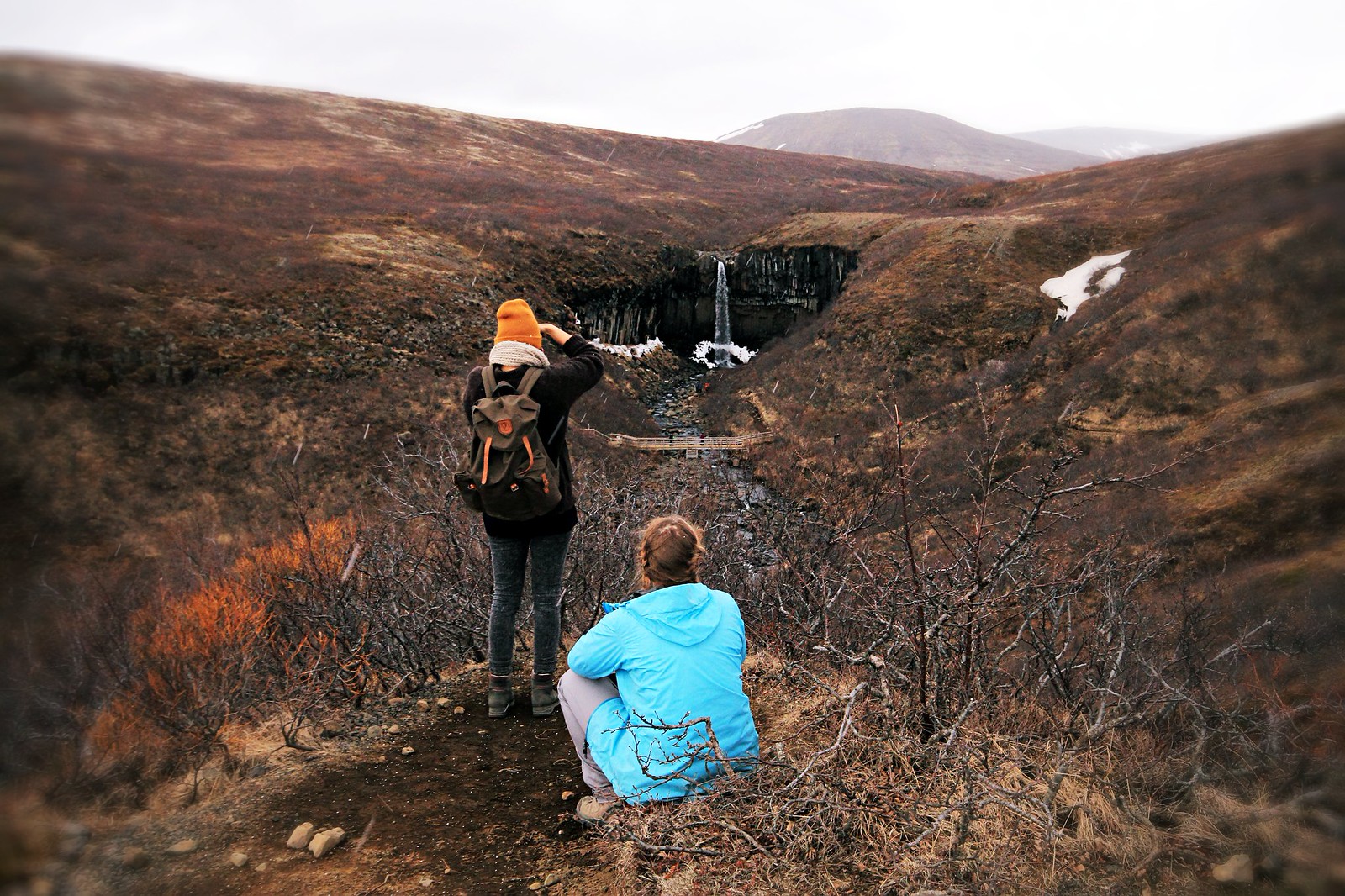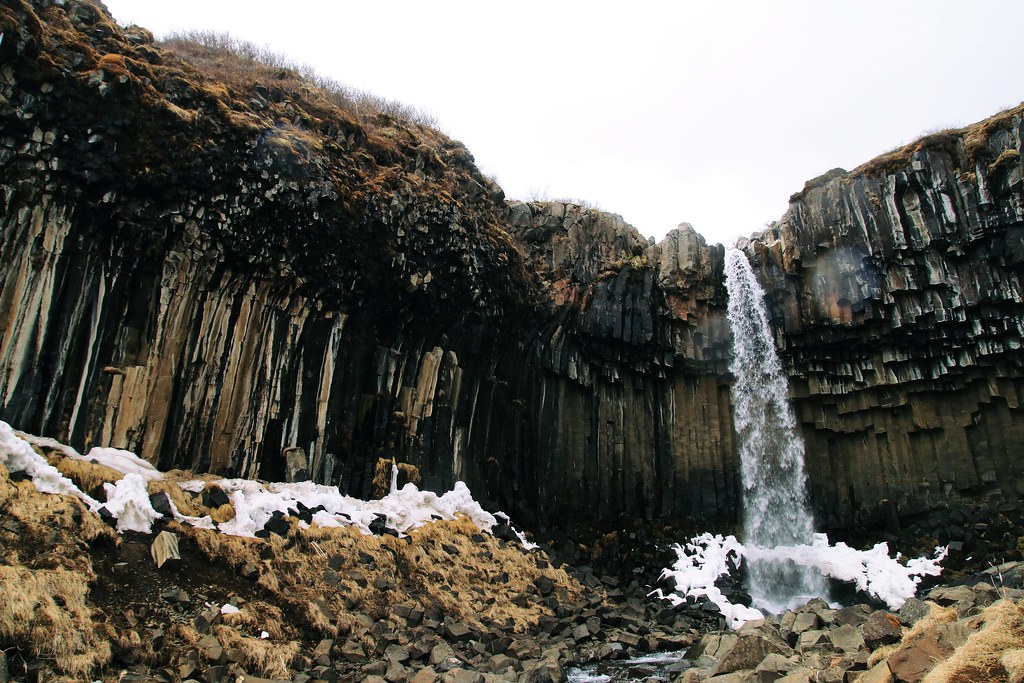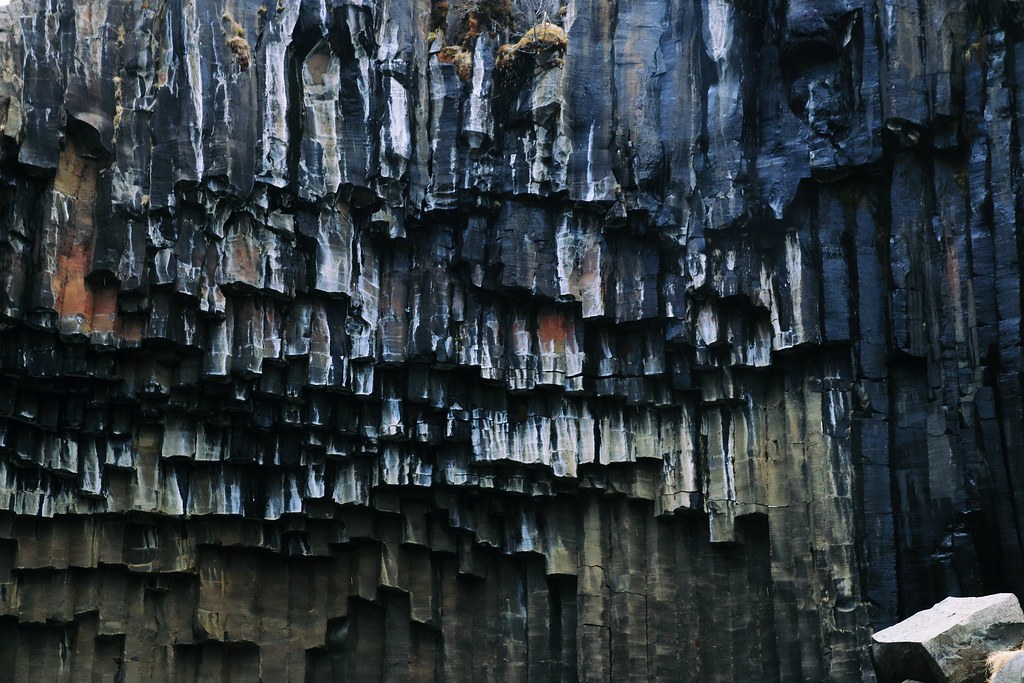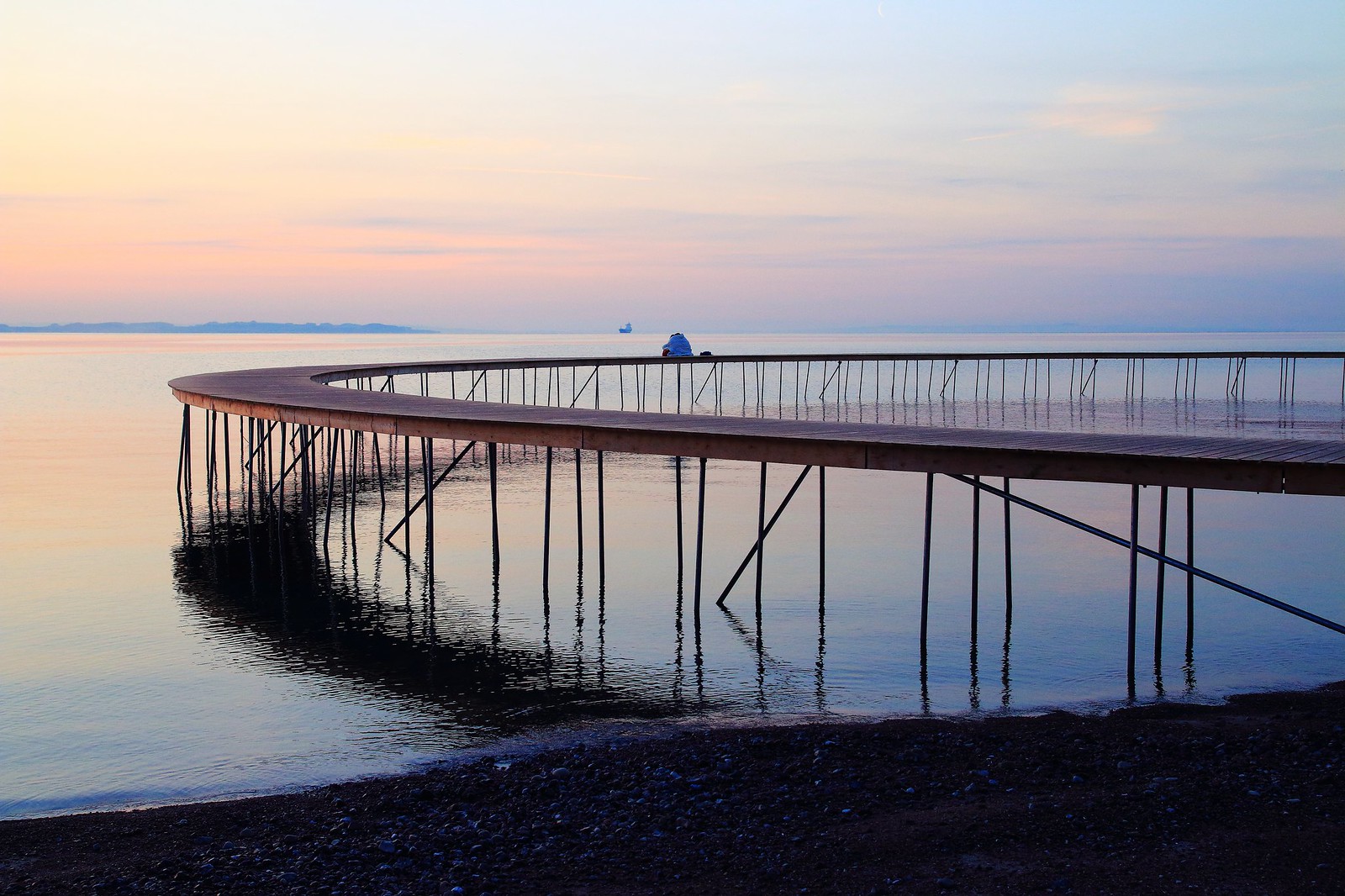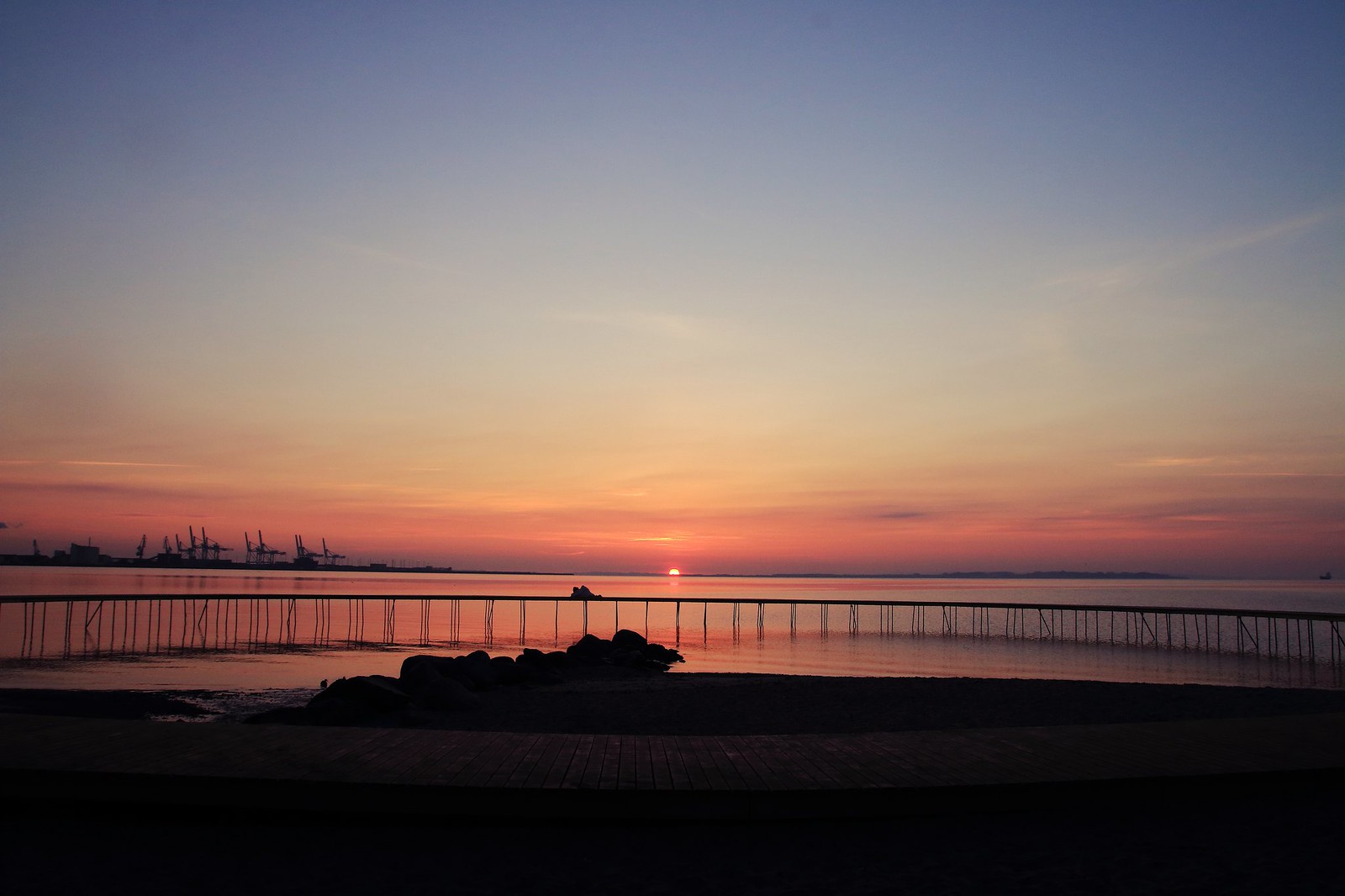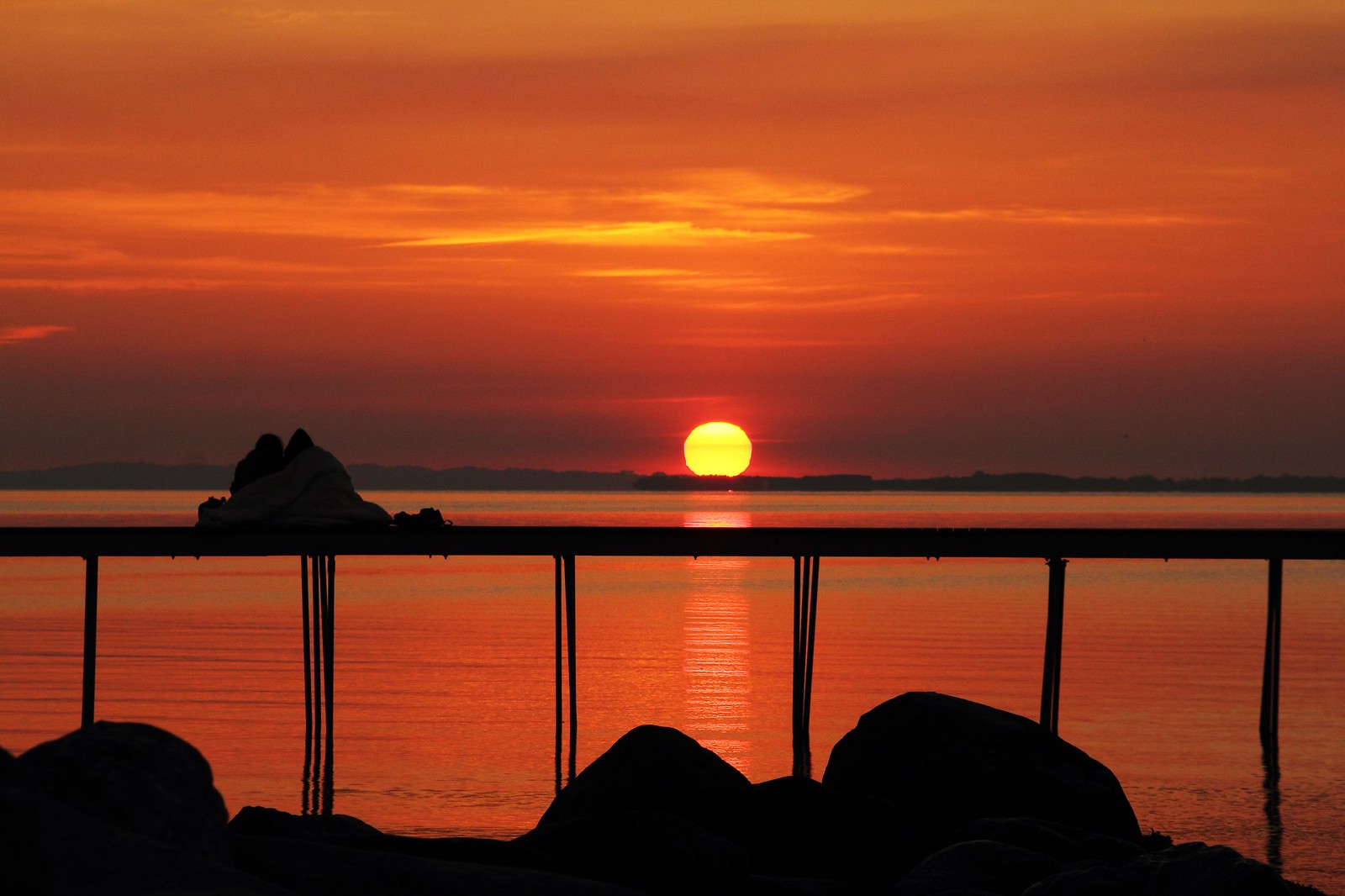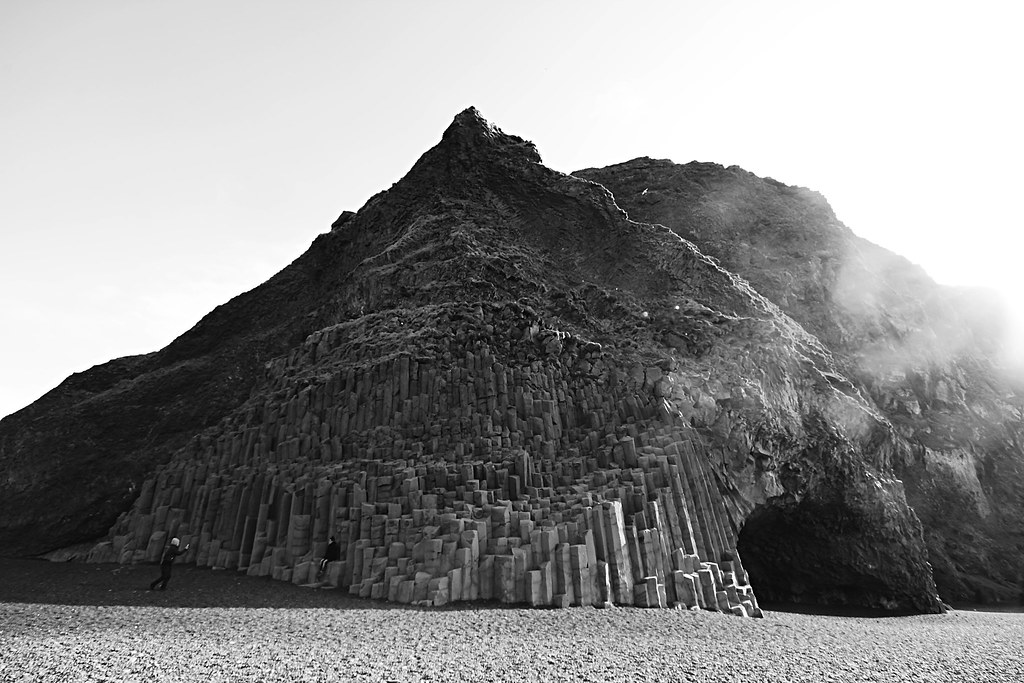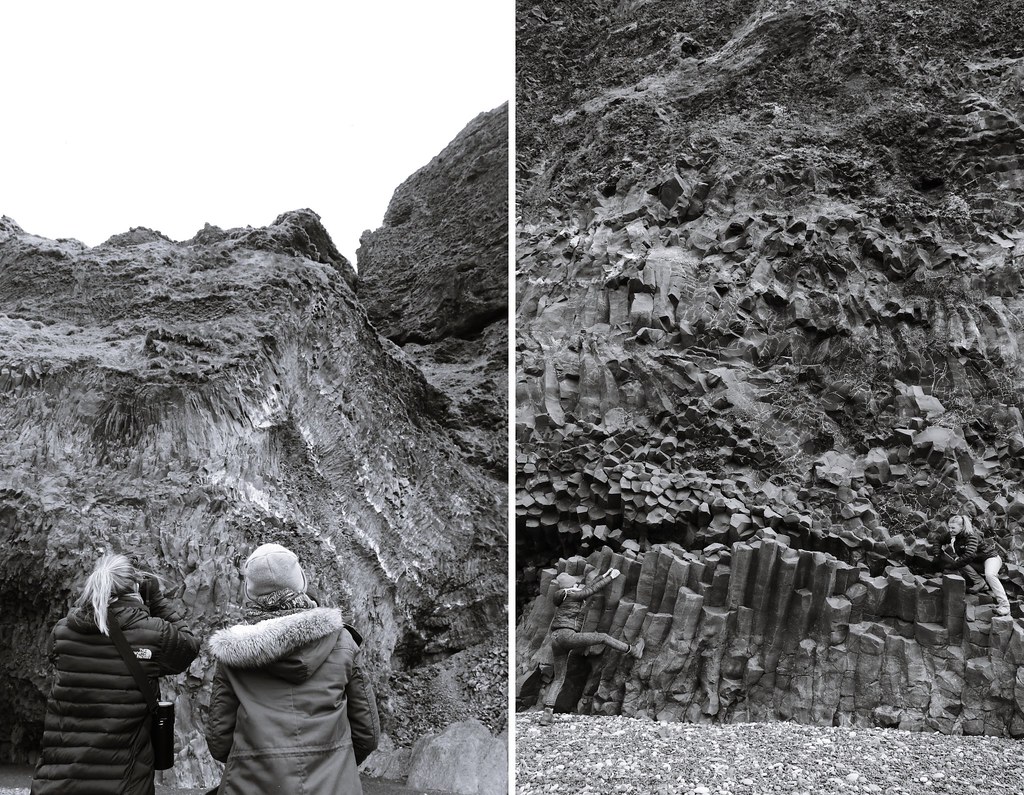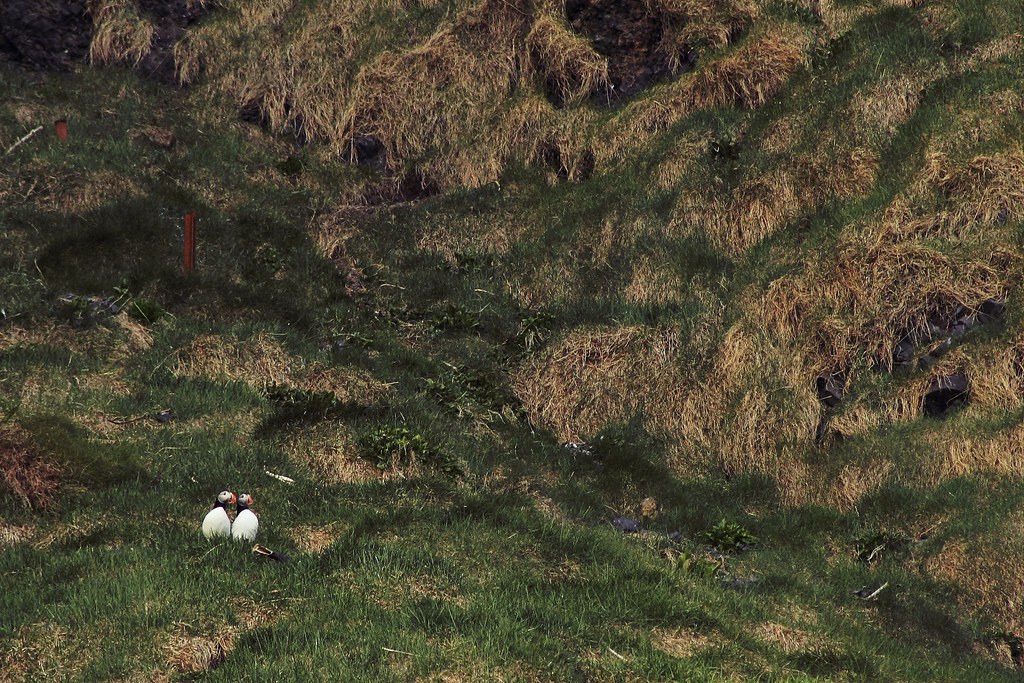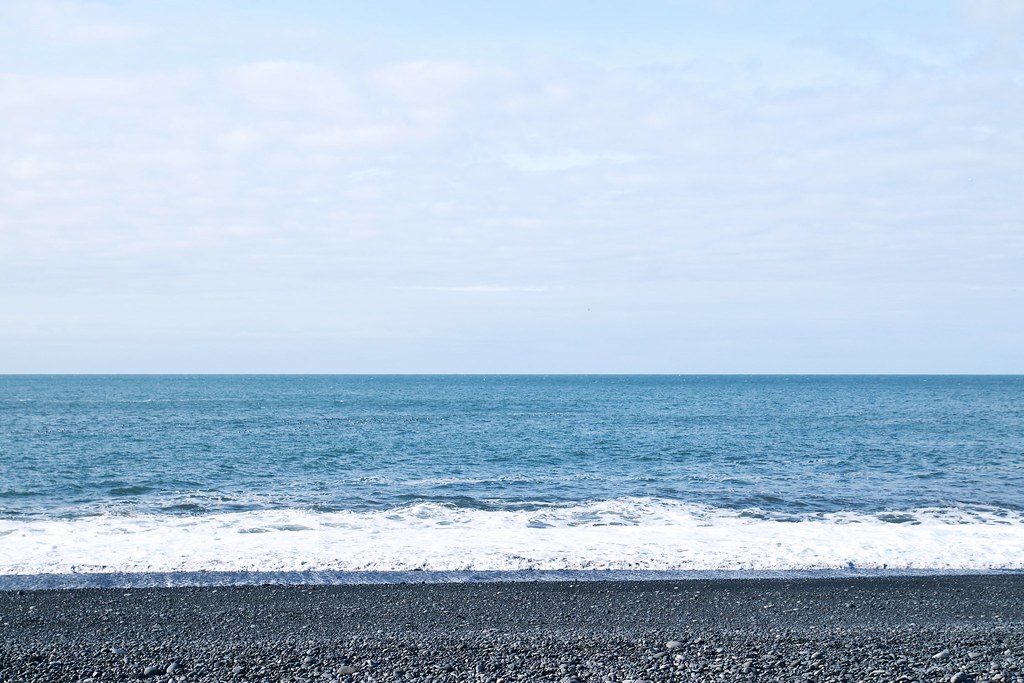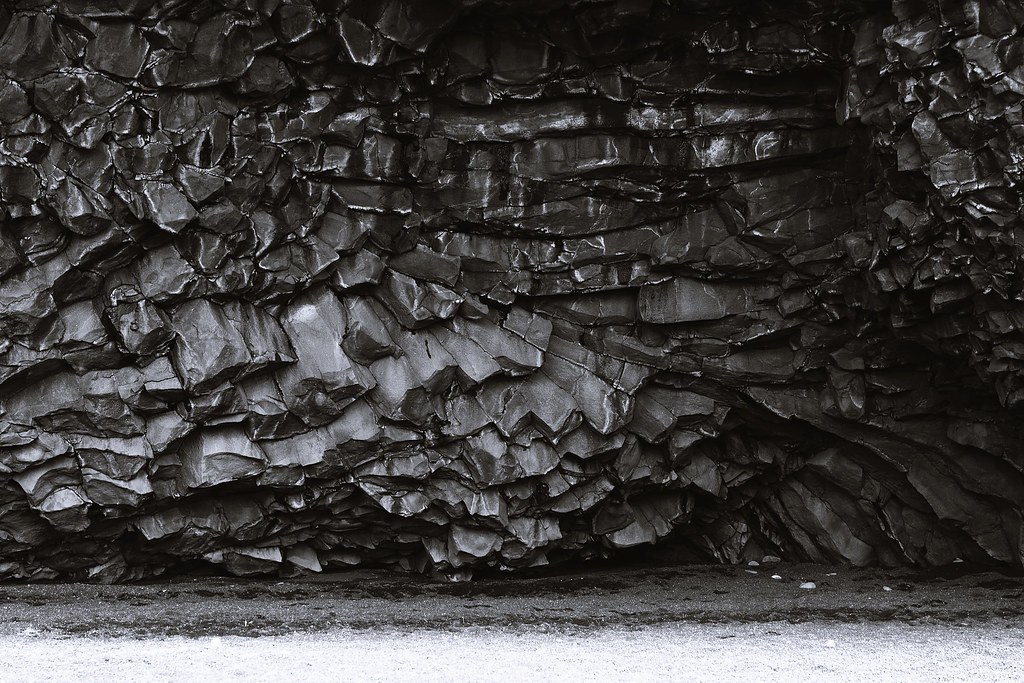When people say that they feel like pulling over ever 5 minutes on the Icelandic road, they are not kidding. I had the same feeling of wanting to take a pause, stop time and then digitally preserve all of the impressions that my eyes were bombarded with. We did plenty of stops on our roadtrip, but then again - not nearly enough compared to the amounts of hidden treasures that are not so often spoken of and which only requires a quick pitstop or a minor detour from the main road. Time was, however, rather limiting for us even though we ditched half of our original plan. This meant we mainly focused on the well-known attractions on the south coast and saved the treasure hunting and random off-roading for another visit.
Driving towards Kirkjubæjarklaustur we couldn't help noticing this one particular lava ridge surrounded by stone cairns. This is known as Laufskálavarða. Travelers crossing the desert of Mýrdalssandur for the first time would pile up stones to make a cairn, which was supposed to bring them good fortune on the journey. We did not follow this tradition, which at the end of the day would come back to haunt us - as I will tell you about later. Instead we admired the different arrangements of the stones and tried a few jump-shots before hitting the road again. Another interesting stop was Skaftárhraun, one of the world's largest lava plains. It looked so soft and I felt like plunging into it and cuddle up with this big green teddy bear. That was until I laid my hand on it and realised it was actually rather stiff and dusty as hell. This green carpet kept on for miles and miles, so as soon as you see it, you do not have to pull over immediately. You will have plenty of time to find the perfect spot to pull over.
Driving towards Kirkjubæjarklaustur we couldn't help noticing this one particular lava ridge surrounded by stone cairns. This is known as Laufskálavarða. Travelers crossing the desert of Mýrdalssandur for the first time would pile up stones to make a cairn, which was supposed to bring them good fortune on the journey. We did not follow this tradition, which at the end of the day would come back to haunt us - as I will tell you about later. Instead we admired the different arrangements of the stones and tried a few jump-shots before hitting the road again. Another interesting stop was Skaftárhraun, one of the world's largest lava plains. It looked so soft and I felt like plunging into it and cuddle up with this big green teddy bear. That was until I laid my hand on it and realised it was actually rather stiff and dusty as hell. This green carpet kept on for miles and miles, so as soon as you see it, you do not have to pull over immediately. You will have plenty of time to find the perfect spot to pull over.
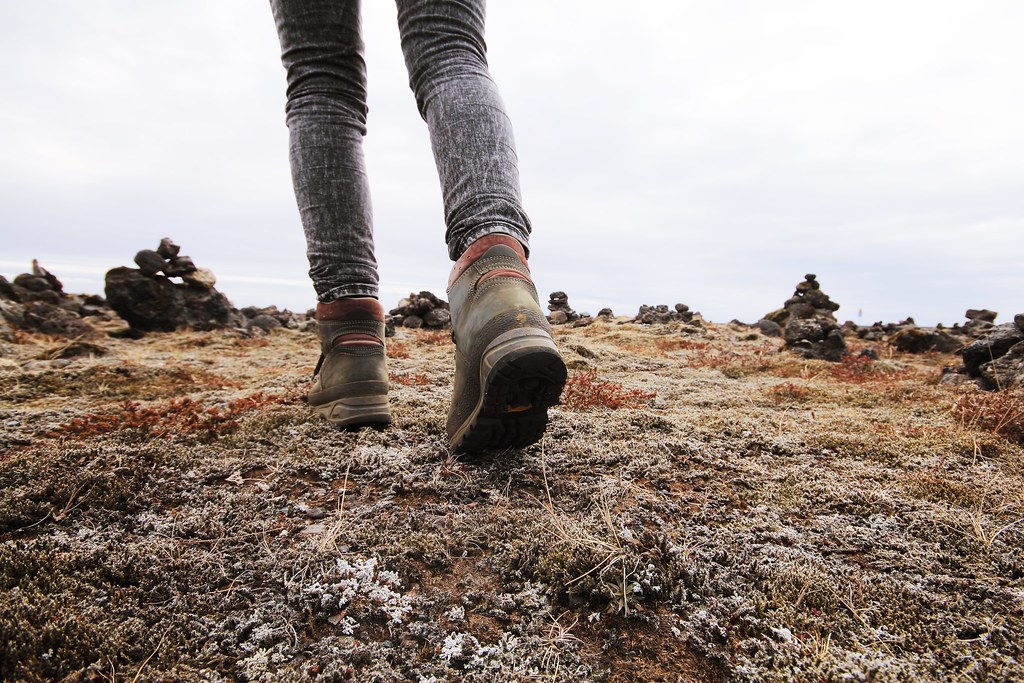
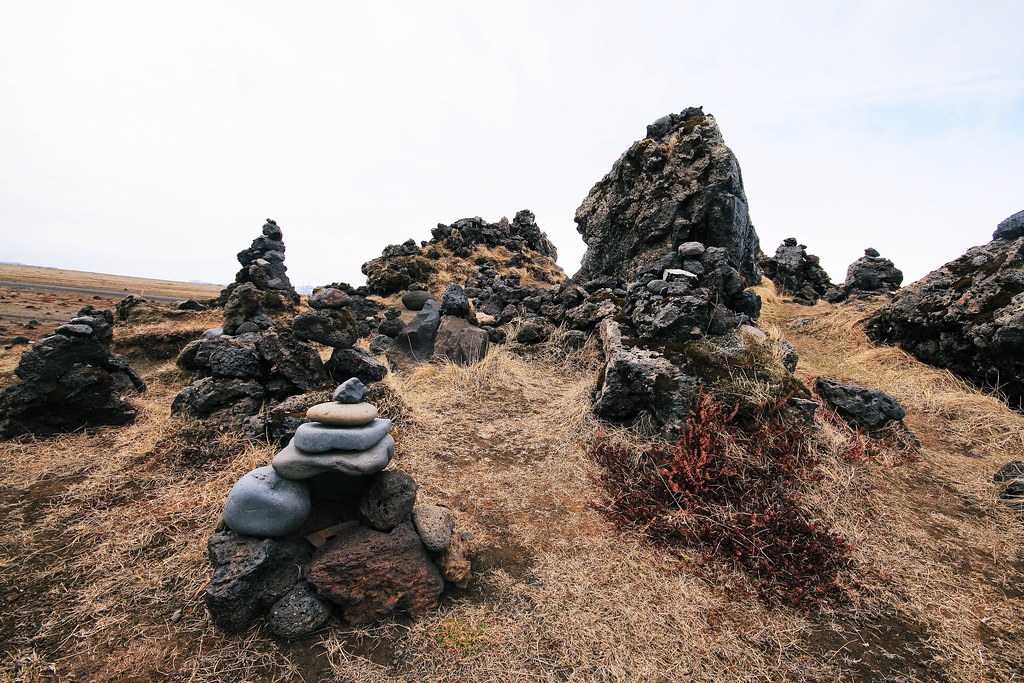
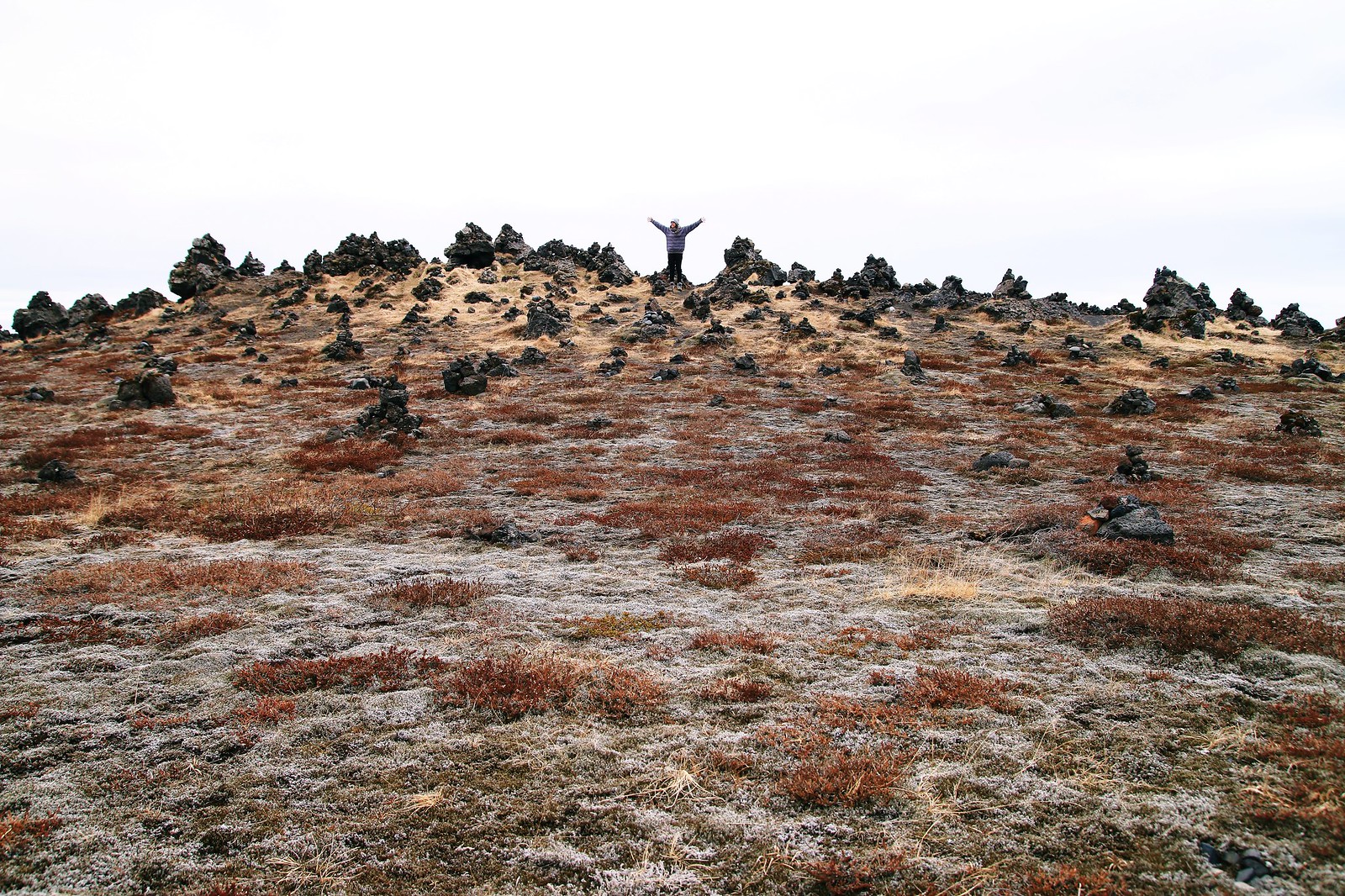

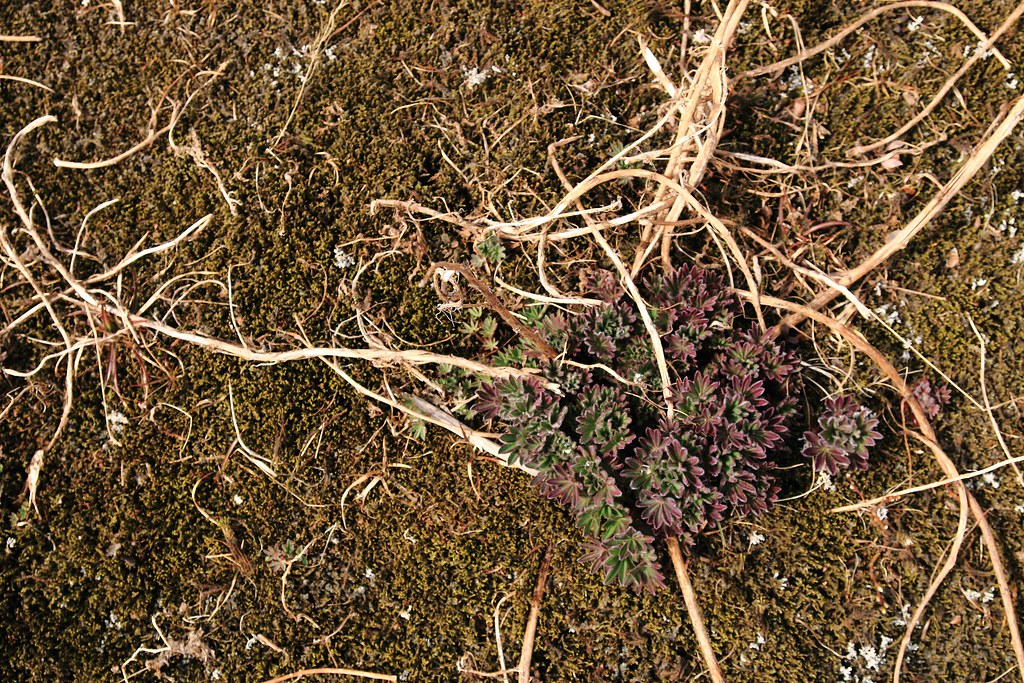

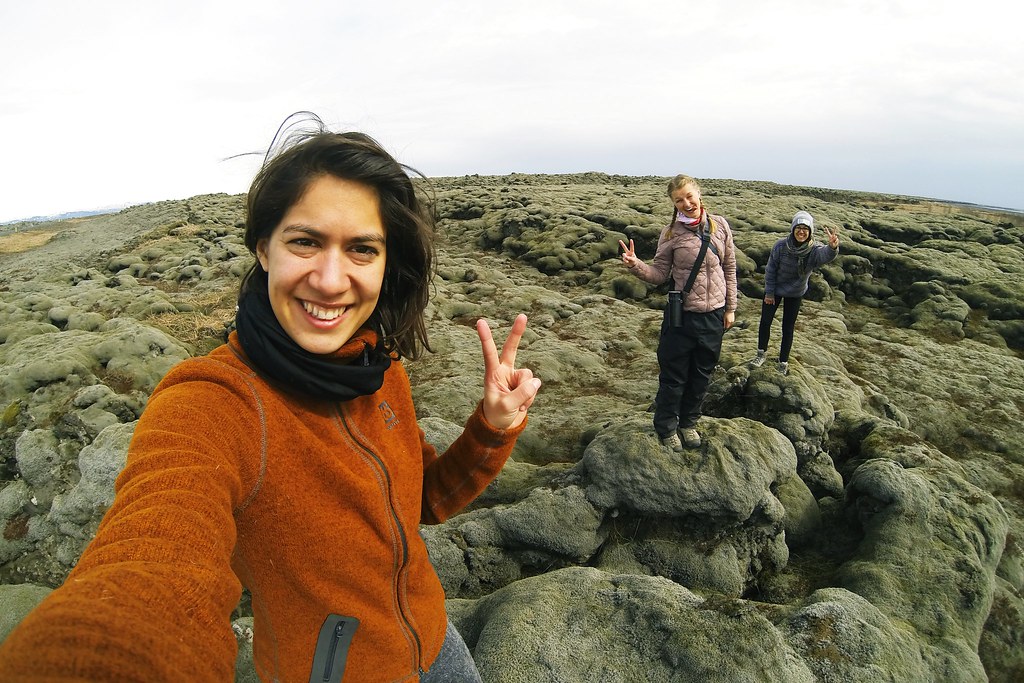
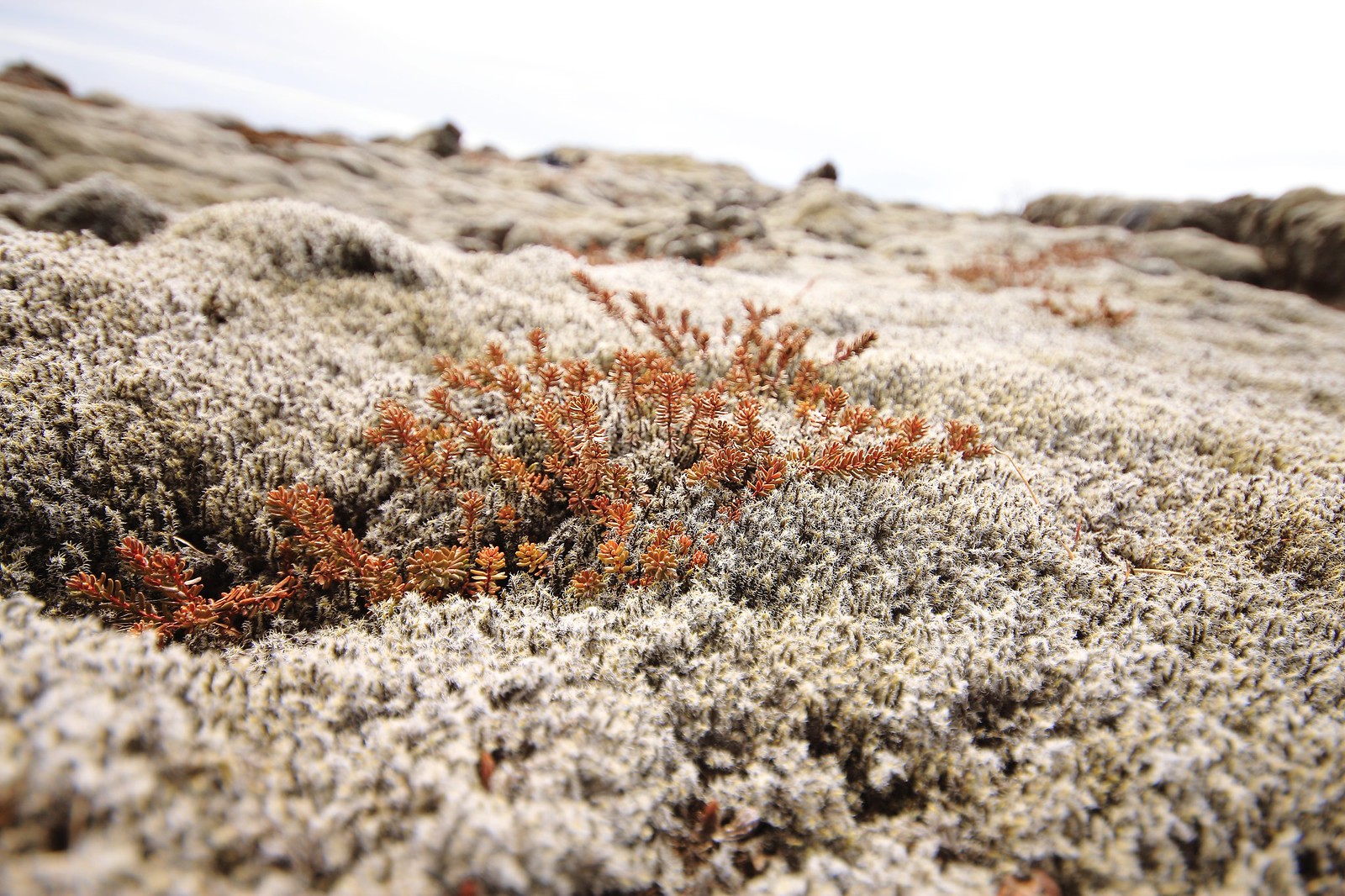
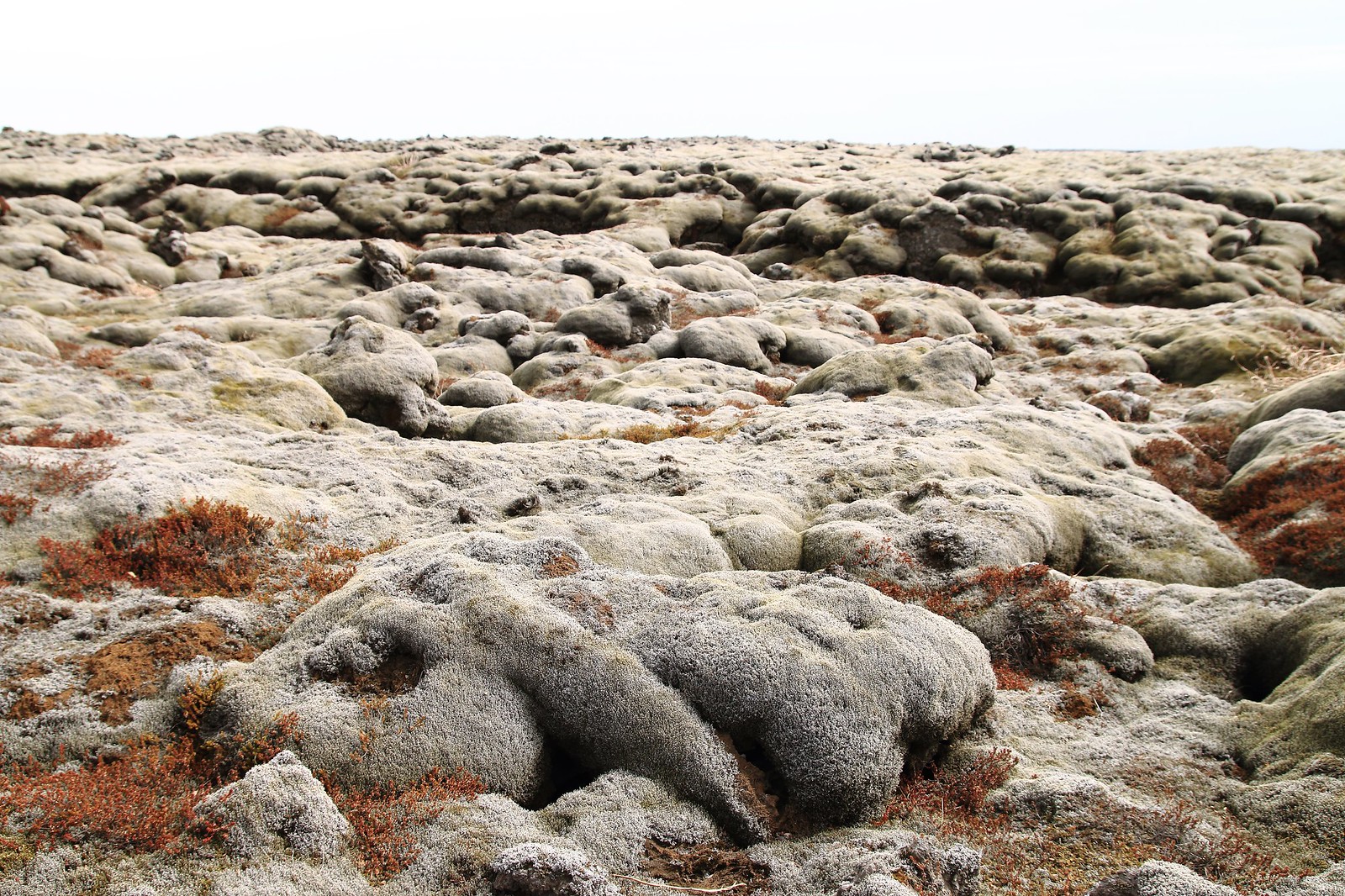
Before passing the village of Kirkjubæjarklaustur, we took a small tour away from the main road to visit Fjaðrárgljúfur Canyon. Katyhawk was kind enough to share the location of this remarkable place with us and after googling some pictures I was sold! The canyon is up to 100 m deep and about 2 km long, with the Fjaðrá river flowing through it. There are two possibilities for hiking in Fjaðrárgljúfur Canyon - either you follow the river at the bottom of the canyon or you walk up hill following the hiking trail from the parking lot along the edge of the canyon. We did the latter to enjoy the majestic scenery from above. The canyon is a beautiful walk and serves as a great spot for challenging your fear of heights .. or your inner fool. Fresh foot prints could be spotted on the older closed trails and at the very edge of these massive walls. This is something that can really tick me off. Of course it can be hard not to venture near the edge of the drop-off for the classical "I am the king of the world" photos (we did it too), but putting yourself in danger by taking a few extra steps towards the edge just to get the perfect picture is insane! Anywho, do drop by this grand place, but please be sane and respectful so in the end you can go home with a smile, a story and a great snapshot.

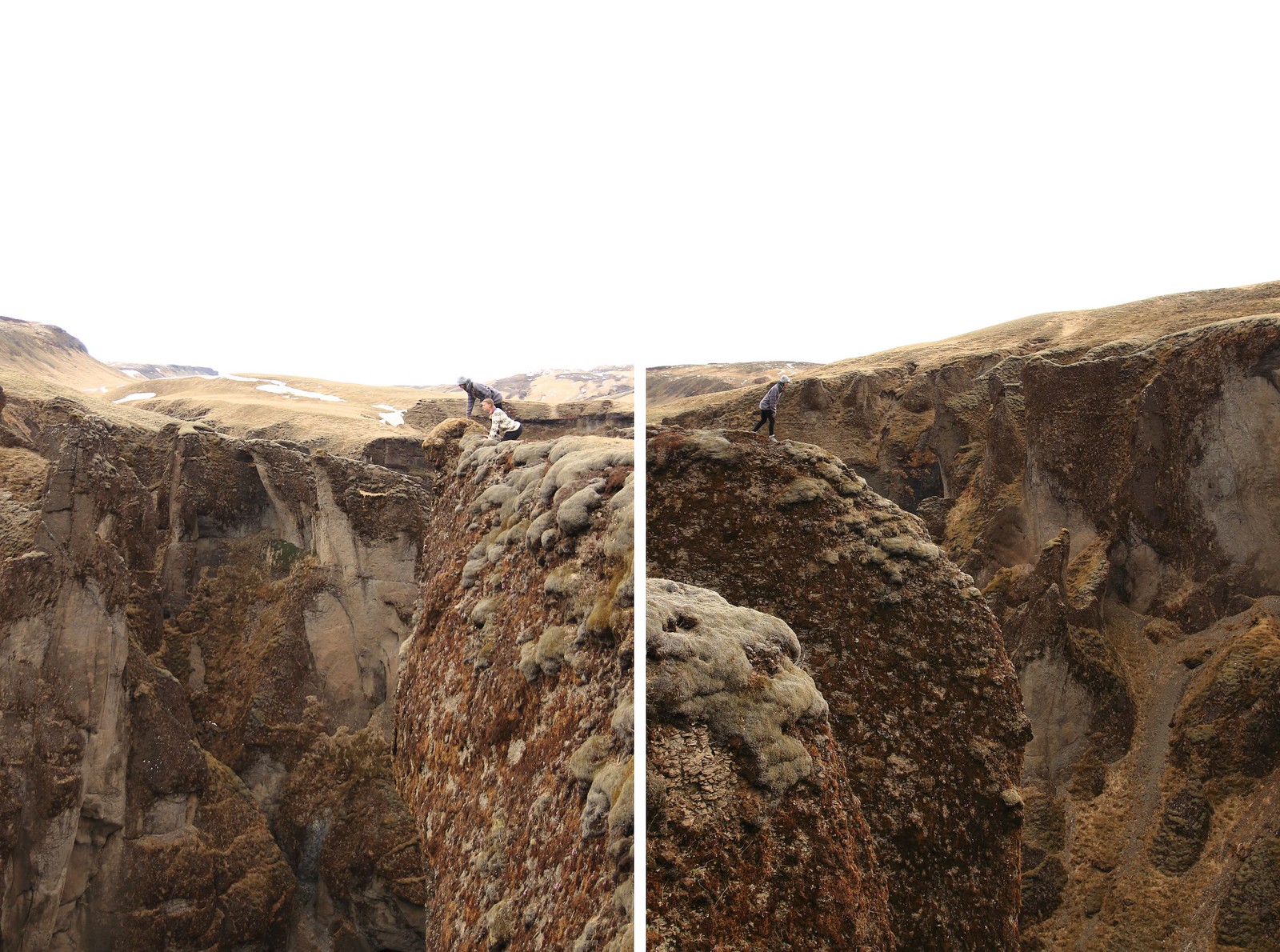
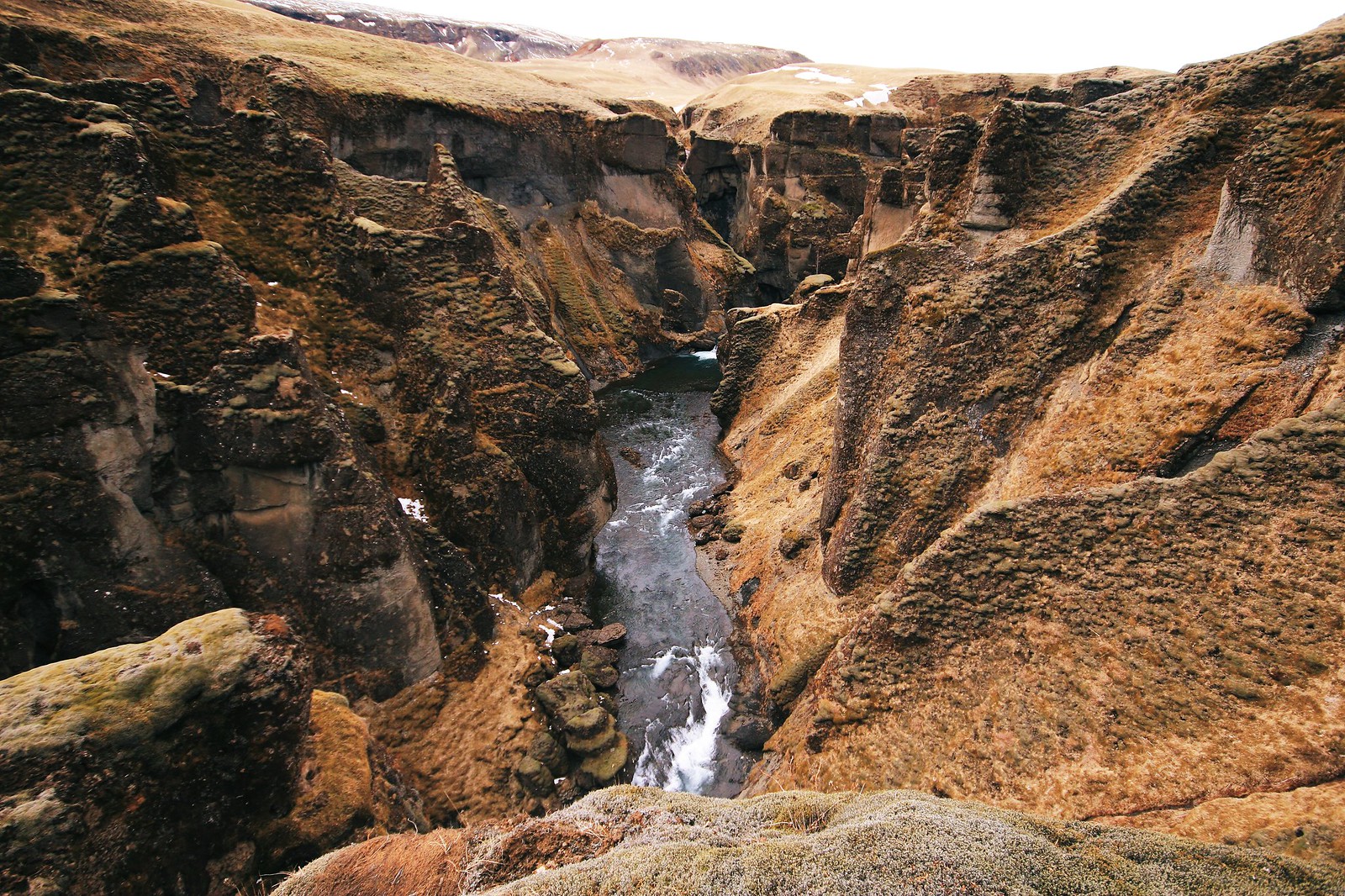
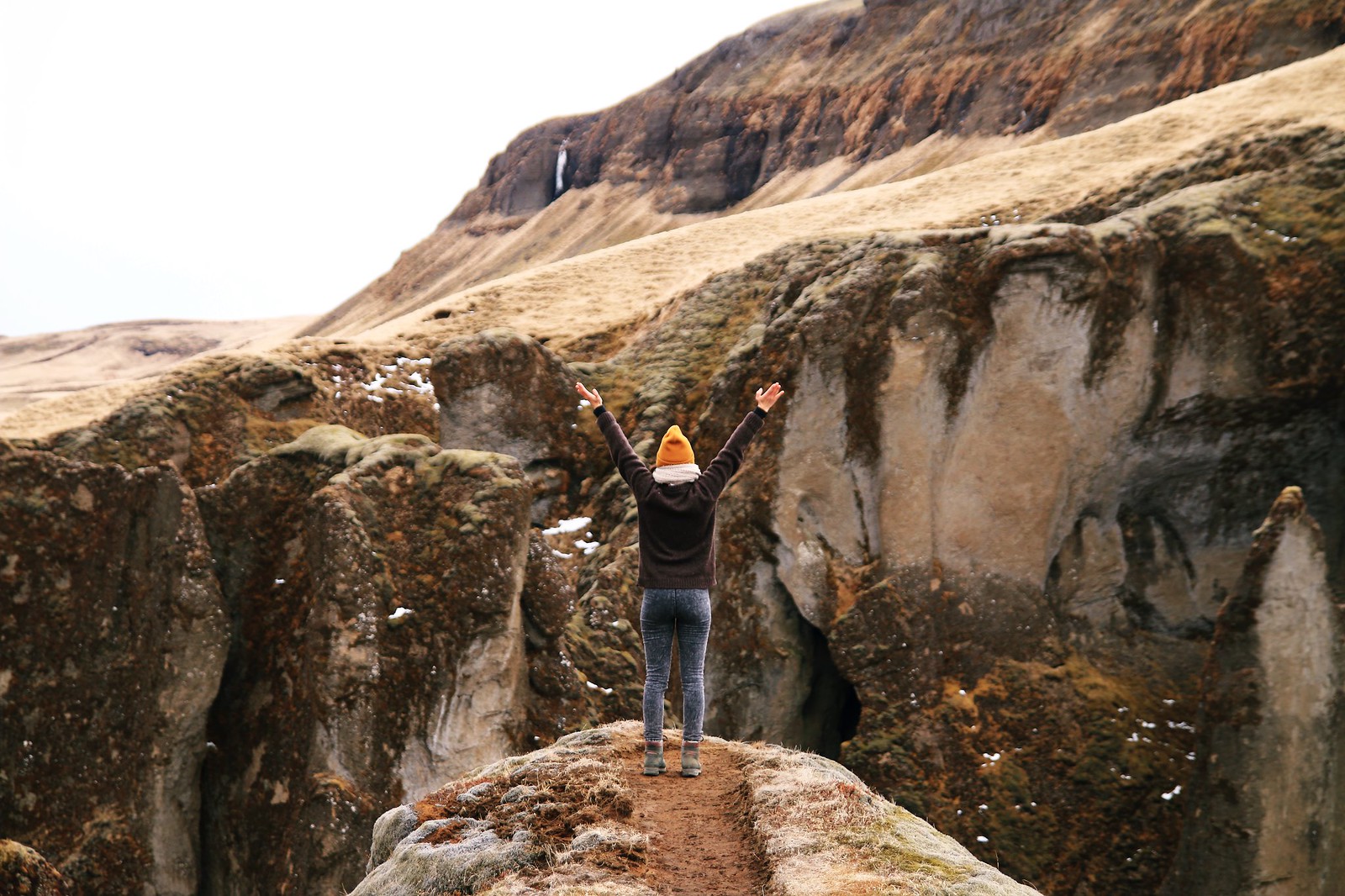
Since Jökulsárlón Glacier Lagoon was on the agenda for the following day we wanted to set up camp relatively close. However, as we reached Skeidararsandur, a vast sand plain, I had to hit the breaks. When picking up the car we had passed down on a sand storm insurance, almost ridiculing the offer. Now, right in front of us, whirling sand, standing meters tall, where transversing the landscape and hence blocking our path. We were in awe. For minutes we were discussing what to do. Should we attempt to drive pass the blowing sand and hope that the car would not look like it had been rubbed with sandpaper for hours? Was this the curse of not laying down the stones at Laufskálavarða? Eventually we were forced to turn around.
The sand storm was caused by a strong wind that evening, so we had a hard time finding a place to put up the tent. We tried a couple of home stays but it was either fully booked or too expensive for our taste. Luckily we found the perfect place - nicely sheltered from the wind and with an outstanding view. Not to mention the perfectly arranged pile of dirt, which served as the ladies room for the night. We quickly cooked dinner as we wanted to hit the sacks as early as possible. It turned out to be an extremly spicy garam masala, which was almost non-edible and not even a good amount of sweet raisins and dried bananas could disguise the burn. This night we agreed to roll out our sleeping bags in the car. It was actually really comfy and we thanked the higher powers for our petit figures, otherwise it would probably not have been possible ;)
The sand storm was caused by a strong wind that evening, so we had a hard time finding a place to put up the tent. We tried a couple of home stays but it was either fully booked or too expensive for our taste. Luckily we found the perfect place - nicely sheltered from the wind and with an outstanding view. Not to mention the perfectly arranged pile of dirt, which served as the ladies room for the night. We quickly cooked dinner as we wanted to hit the sacks as early as possible. It turned out to be an extremly spicy garam masala, which was almost non-edible and not even a good amount of sweet raisins and dried bananas could disguise the burn. This night we agreed to roll out our sleeping bags in the car. It was actually really comfy and we thanked the higher powers for our petit figures, otherwise it would probably not have been possible ;)
